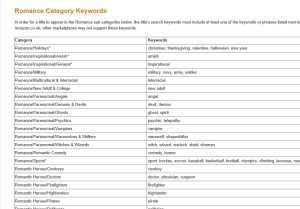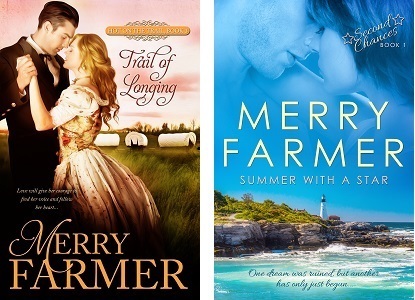Writing Tip – Unlocking the Secrets of Discoverability

© Cameliastan | Dreamstime.com – Choosing A Book Photo
How on earth do you get readers to discover your books? Isn’t this what we all want to know? It’s the number one topic sure to drive a new author crazy, and it’s also the most important thing we can tackle in our publishing journey.
So you’re just starting out and no one knows your name. What to do? I made the comment to a writer/editor/publicist friend of mine the other day that it’s harder now to get started in self-publishing than it was four years ago. But she disagreed with me. She had a good point. She said that the same thing that sold a book back then is the same thing that sells a book now, and it doesn’t matter if it’s your first book or your fiftieth book. Those things are the cover, the blurb, and the keywords.
Cover and blurb are easy to wrap your mind around. For covers, you want something professional-looking that stands out. You also want it to be representative of the content of the book. That means naked people covers for certain heat-levels of romance are actually appropriate. Gentle covers with more of a landscape or abstract motif are suitable for other levels. If you’re writing a historical novel, appropriate era of dress for the cover models is key (which I learned the hard way with one of my novellas). And while the appropriate cover for any genre may not be our favorite aesthetic, covers are a visual cue to potential readers of what they’re about to experience. I can’t recommend enough that you do the research to figure out what kind of covers the genre you’re writing for favors. Professional cover designers are really good at knowing this, though.
And I’d like to take a moment to give a slow-clap to my cover designer, Erin Dameron-Hill, for knowing her stuff. Because of these two designs she’s done for me, you can tell at a glance exactly what kind of story you’re going to get, what the sub-genre is, and what the mood of the story is, even. Erin is a genius:
As far as the blurb goes, you want something that accurately describes the story stated concisely and with tension. A blurb that excites the reader and leaves them wanting to read the book to find out more is a successful blurb. It’s your elevator pitch on steroids. Write a cool blurb, and readers will be hungry for more.
Honestly, the way I learned to write blurbs was by reading them on the back of novels year after year after year, and also by watching trailers for movies. Remember those days of MoviePhone? “In a world where only the strong survive…” Those little blippets of plot were designed to sell a movie to someone without them even being able to see any visuals. That’s what you want to go for. Tease your reader, use words that are full of emotional impact, that suggest danger or conflict. You have roughly ten seconds to grab someone and make them want to know if your main characters are going to be okay. I can’t tell you how many times various writer groups that I’ve been part of have polled readers, and every time they say that the blurb is what drew them to the book.
So what about these keywords then? This is something I’m still trying to fully figure out. In a nutshell, keywords will bring your book up in a search—an overt search initiated by a reader or a more algorithm-based automatic search on whatever website your book is hosted on. Certain keywords in your blurb, title, and in the spot where it asks for a number of keywords when you upload your manuscript can make your book more discoverable.
In my early days of publishing, I made the mistake of being clever and coming up with my own keywords that I thought best described my unique stories. The problem with that, though, is that my keywords were so unique that they were useless. This is the one area where you want to be as unoriginal as possible. You want to pick keywords that are hot, keywords that a lot of other authors have picked. Things like Medieval, Knights, Highlander, Regency, Western, Billionaire, Love Triangle, etc. Fortunately, Amazon has a lovely page where they list common keywords.
 https://kdp.amazon.com/help?topicId=A200PDGPEIQX41
https://kdp.amazon.com/help?topicId=A200PDGPEIQX41
You have no idea how much I wish I’d found this page earlier. It’s very cool.
Beyond those basics of cover, blurb, and keywords, some of the biggest tools for discoverability that I know are your writing friends. I can’t tell you how helpful it’s been for me, as a Western Historical writer, to be part of the Pioneer Hearts group of authors and readers. We operate mostly on Facebook, and the amount of support we all lend to each other is legendary. I think there are other author groups for other genres and sub-genres out there. Hearts Through History is invaluable too. The more authors help each other, the better all of our chances are. And I’m not talking about promoting each other all the time. I’m talking about sharing ideas and banding together for group promos and interacting with each other’s fans. Interacting does more than promoting any day.
And, of course, getting your name out there through various book promotion sites is always a good thing. Some sites are more effective than others (BookBub, eReader News Today, The Midlist) and others are lovely, but not as effective (StoryFinds, The Fussy Librarian). They can be expensive, and there are no guarantees that your book will be selected for promo, but I personally think you’ve got to at least try. I am not exaggerating when I say that I owe my visibility now to a BookBub promo in 2012. Seriously. It was a game-change for me.
It is possible to be discovered, even when you’re just starting out. All it takes is a little attention to detail. You can do it.




